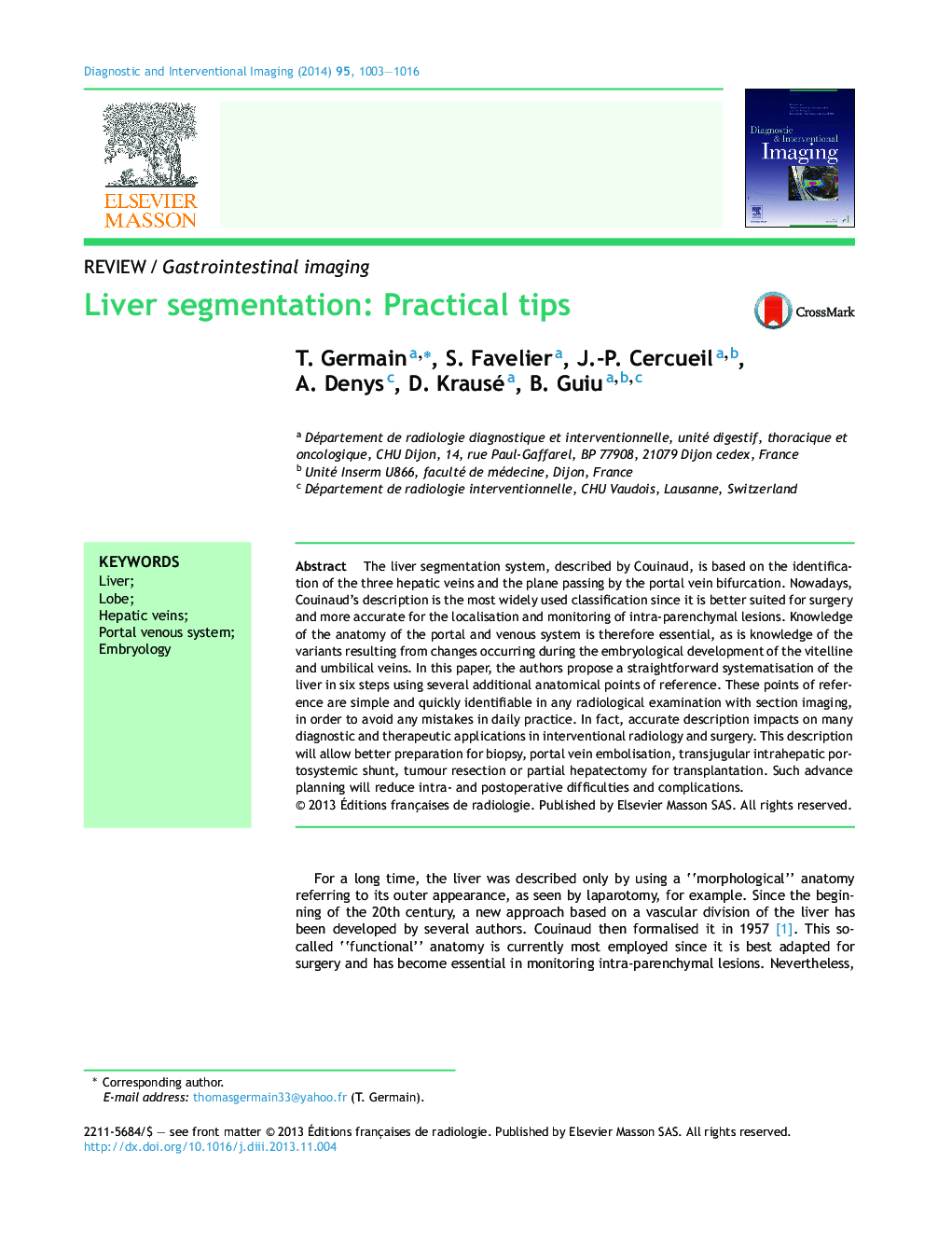| Article ID | Journal | Published Year | Pages | File Type |
|---|---|---|---|---|
| 2733755 | Diagnostic and Interventional Imaging | 2014 | 14 Pages |
The liver segmentation system, described by Couinaud, is based on the identification of the three hepatic veins and the plane passing by the portal vein bifurcation. Nowadays, Couinaud's description is the most widely used classification since it is better suited for surgery and more accurate for the localisation and monitoring of intra-parenchymal lesions. Knowledge of the anatomy of the portal and venous system is therefore essential, as is knowledge of the variants resulting from changes occurring during the embryological development of the vitelline and umbilical veins. In this paper, the authors propose a straightforward systematisation of the liver in six steps using several additional anatomical points of reference. These points of reference are simple and quickly identifiable in any radiological examination with section imaging, in order to avoid any mistakes in daily practice. In fact, accurate description impacts on many diagnostic and therapeutic applications in interventional radiology and surgery. This description will allow better preparation for biopsy, portal vein embolisation, transjugular intrahepatic portosystemic shunt, tumour resection or partial hepatectomy for transplantation. Such advance planning will reduce intra- and postoperative difficulties and complications.
